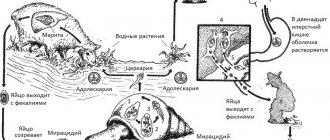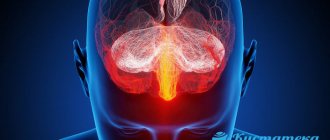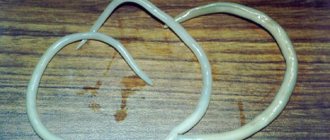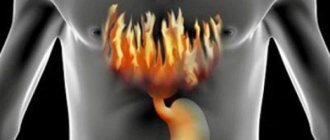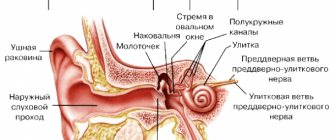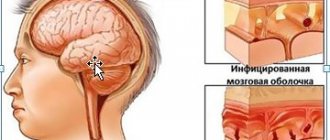Causes, symptoms and treatment of foot arthrosis
When diagnosing arthrosis of the foot, experts mean degenerative-dystrophic changes in the cartilage of the foot, inflammation of surrounding tissues, and impaired blood circulation, leading to changes in metabolism.
This disease is characterized by unexpected pain, distortion of the shape of the fingers, painful calluses, rapid fatigue and the appearance of a special gait, in which the patient tries to transfer the main load to the outer area of the foot. The result of this disease can be disability.
The prevalence of the disease among older patients is quite high; arthrosis of the foot is considered one of the most common joint diseases.
Women who have crossed the forty-year mark are at risk. After 55 years, more than 85% of people suffer from manifestations of this disease, although there are frequent cases of the development of foot arthrosis in young people who prefer active sports.
General structure of the foot
This part of the body is located at the very bottom and is in contact with the surface of the earth. The foot performs spring and balancing functions; it represents the main support when moving and standing.
This part of the limb can be divided into three zones: fingers, metatarsus, tarsus. Its skeleton consists of 26 bones covered with dense connective tissue or cartilage. Thanks to the latter, the components of the foot are smooth and are distinguished by their ability to move smoothly.
Tendons connect bones; ligaments can form a special capsule filled with a special liquid substance around the joint. The foot is capable of performing smooth and complex movements thanks to the activity of the muscles located in it, controlled by the tibial nerve. The tibial arteries provide a stable blood supply, and the superficial veins provide venous outflow.
With arthrosis of the ankle joint, the cartilage that protects the bones begins to suffer first; they cease to be elastic, collapse and are no longer able to absorb impacts when walking. This leads to the fact that the surface of the bones experiences significant stress, and ligaments and tendons begin to be damaged. In this area, blood microcirculation is disrupted, which leads to osteochondral growths and changes in articular surfaces, limiting the range of motion.
Periarticular tissues also undergo fibrosclerotic transformations. The toes begin to deform and become fixed in an unnatural position. The big toe is the first to undergo changes (see hallux valgus), the new position of which leads to a displacement of the rest.
Prevention
To prevent a person from developing deforming arthrosis of the ankle joint, the following recommendations should be followed:
- reduce the mechanical load on the leg;
- choose the right shoes;
- healthy eating. It is necessary to limit the consumption of foods that contribute to the deposition of salts;
- gymnastics. There are passive and active exercises. During passive gymnastics, a person sits and relaxes his limbs as much as possible. In this case, the lower leg is fixed, and the patient performs semicircular movements with the foot. In addition, exercises with objects in water are often used.
What to do?
If you think you have arthrosis of the feet
and symptoms characteristic of this disease, then a rheumatologist can help you.
Source
Did you like the article? Share with friends on social networks:
Causes of foot arthrosis
The following conditions can lead to the occurrence of arthrosis of the foot:
- 1) A foot with anatomical features or structural anomalies, represented by flat feet, malformed joints, deformity of the lower leg, curvature of the toes or their hammertoe shape.
- 2) Injuries to the lower leg, expressed by sprains, bruises, sports injuries, bone fractures.
- 4) Presence of endocrine pathology.
- 5) Frequent cooling of the foot.
- 6) The presence of certain degenerative changes in other joints.
Predisposing factors include the following:
- constantly wearing shoes with heels, too tight or with a narrow toe.
- non-compliance with the rules of a healthy lifestyle, healthy eating and adynamia.
- being tall or overweight, which places increased stress on the support points.
- hereditary predisposition when close relatives suffer from arthrosis or arthritis.
- standing for long periods of time, carrying heavy objects.
- sudden cessation of sports activities, when muscle tissue begins to weaken rapidly, and joints continue to be very mobile.
The listed circumstances do not necessarily cause the disease, but if they are present, you should be especially careful and take preventive measures.
Arthrosis of the foot can occur for no reason, in which case it is said to be a primary form of the disease. All foot joints are affected. Under the influence of certain factors, a secondary form of arthrosis usually develops, which can affect 1-2 joints.
We also recommend that you familiarize yourself with other forms of this disease:
Treatment of foot arthrosis
Therapeutic measures for arthrosis of the foot are conservative or surgical. It is impossible to completely recover from this disease, since cartilage that has undergone deformation cannot be restored to its original appearance.
All funds are used to preserve the foot in its current condition, prevent deterioration, relieve pain and restore mobility.
Drug treatment for arthrosis of the foot includes non-steroidal drugs that relieve pain and inflammation. In severe cases of the disease, it is possible to use steroids that improve the nutrition of cartilage tissue. The supporting function is performed by chondroprotectors.
If conservative methods of treating foot arthrosis are ineffective, surgical intervention is resorted to. In this case, it is possible to perform resection of calluses, endoprosthetics and arthroplasty.
Nutrition for patients with arthrosis
It is impossible to completely cure arthrosis of the foot. However, stopping the destruction of cartilage tissue and improving the patient’s well-being is quite possible. Strict adherence to the diet improves the patient’s condition and helps reduce the load on the joint.
Diet is important at any stage of the disease. The sooner a person pays attention to the problem, the less the pathology will progress.
Nutrition must necessarily contain substances needed by the body. You cannot go on a strict diet to lose weight, as the patient will be deprived of vitamins, minerals and other substances necessary for building cartilage tissue.
When creating a menu for arthrosis of small joints of the foot, you should consider the following recommendations:
- Dishes should be baked, stewed or boiled, but not fried;
- A complete avoidance of hot and spicy foods is important;
- Meals should be frequent and portions small;
- Products with chemical additives should be avoided;
- Last meal no later than 3 hours before bedtime.
In order for the body of a person suffering from osteoarthritis of the foot to receive the necessary substances, the menu must contain meat dishes. Turkey and lean fish are good. It is important to include enough greens in your diet. Parsley, spinach, lettuce and celery have a beneficial effect on the condition of the foot joints.
Dairy and fermented milk products should also be in the diet. Bread should be chosen from wholemeal flour. The vegetables that are most useful for arthrosis are the following:
Instead of sweet buns or candies, it is better to eat fruits. Dried fruits and homemade juices are also great to supplement your diet.
Arthrosis of the foot: causes, symptoms and treatment (with photos)
Arthrosis of the lower extremities is a degenerative disease that can affect various joints. Moreover, foot damage is the most common problem, occurring in approximately 80% of cases.
Women of mature age are most susceptible to the development of the disease; in men, the pathology is somewhat less common. This is due to the fact that women often wear uncomfortable shoes and high-heeled shoes. In this case, the load on the foot is redistributed, which leads to its gradual deformation.
The disease is accompanied by severe pain and other negative symptoms, so it is very important to know how the pathology manifests itself and what treatment methods modern medicine offers.
Classification
The foot is a complex system containing multiple small joints. Because of this, the inflammatory reaction can manifest itself in any of these segments. Experts classify arthrosis into the following forms:
- Pathology of the metatarsophalangeal joint;
- Damage to the subtalar part of the joint;
- Disease of the calcaneocuboid joint;
- Disorders of the metatarsocuneiform joints;
- Inflammatory process of the toes.
The disease is also classified based on its development:
- Primary, which is associated with an inflammatory disease of the foot itself or its injury;
- Secondary pathology is provoked by reasons that do not directly affect the damage to the joints - hormonal imbalance;
- Polyarthrosis is a form of the disease that involves an inflammatory reaction of several different segments of the leg simultaneously.
From its inception to severe forms of manifestation, arthrosis of the foot goes through three stages of development:
- First. Arthrosis during this period of time is characterized by rapid fatigue of the lower extremities and pain anxiety after heavy physical exertion (work or long walking). The patient has virtually no limitation or stiffness in joint movements. Such minor discomfort aggravates this problem, since the person tries to relieve the unpleasant sensations on his own and is in no hurry to see a doctor.
- The second degree of the pathological process is characterized by a pronounced clinical picture; the patient is plagued by prolonged painful attacks. Added to this symptom is the formation of small lumps on the knuckles and calluses.
- The third form of damage is expressed by noticeable deformation of the joints of the foot. The patient experiences lameness in gait, severe limitations in movement, and even complete inability to walk. When diagnosing arthrosis at this stage of the inflammatory process, x-rays of the lower extremities indicate the absence or significant narrowing of the joint spaces.
- The fourth stage is characterized by strong changes in the joints and tissues that are in their environment.
The presence of such manifestations should alert the patient. A person needs qualified help from a specialist. You cannot delay treatment; pathology with regular unfavorable factors tends to progress.
The inflammatory reaction quickly progresses from a mild form to a more severe stage that is difficult to cure. Timely diagnosis and treatment will help prevent complications and restore a full quality of life.
A type of arthrosis affecting the foot is gout. A sudden attack usually affects the base of the big toe, causing throbbing pain and inflammation. Red spots develop on the skin of the foot, and the places where the inflammatory process occurs become warmer tactilely. The slightest touch to the site of gout provokes a severe attack of pain. Such symptoms may be accompanied by a general increase in temperature.
Another type of the disease in question is its rheumatoid form. It belongs to the category of autoimmune pathologies that affect the joints of the lower extremities.
The disease is accompanied by pain, significant swelling, burning in areas around the affected joints and redness of the skin. Not only bones are damaged, but also cartilage, which causes visible deformation of the ankle in the ankle area. Other signs of rheumatoid arthritis are a feeling of stiffness in gait, certain difficulties when moving.[/color-box]
Regarding diagnostics, we note that it consists of performing the following procedures:
- Collection of anamnesis, taking into account a detailed analysis of the patient’s complaints;
- Radiography required to identify the condition of the joint and the degree of development of the disease;
- Computer or magnetic resonance imaging – studies that allow you to examine both bone (cartilage) tissue and muscle condition;
- Laboratory tests to determine the presence of inflammation;
- Measuring foot dimensions.
Characteristics of the disease
Arthrosis of the foot is a pathology accompanied by degenerative changes in tissue in the affected area. Initially, negative processes affect cartilage tissue, spreading over time to bone tissue. A distinctive feature of the disease is the absence of obvious signs of the inflammatory process that occur in other similar pathologies.
Dystrophic changes can affect any component elements, however, arthrosis of the thumb is most often observed. There are various forms of the disease: localized, bilateral, multiple.
Diagnostics
Arthrosis of the foot is a dangerous disease also because in the early stages it is quite difficult to detect, and in the later stages of development it is difficult to distinguish it from other inflammatory diseases of the joints. At the first manifestations of the disease, you need to urgently make an appointment with a doctor. He will conduct an examination and refer you for an x-ray examination. At the moment, there are no specific laboratory tests that can determine ankle arthrosis. The disease can be indicated by the results of a study of intra-articular fluid, antibodies, and bioproducts of the breakdown of cartilage tissue.
In order to confirm the expected diagnosis and clarify the characteristics of the disease, specialists use the following methods:
- X-ray;
- MRI;
- CT scan of the foot;
- puncture of the joint of the big toe;
- bone scintigraphy.
In addition, doctors write directions for blood and urine tests. After conducting research, experts summarize what ailment is a prerequisite for the appearance of arthrosis.
Reasons for appearance
The exact cause contributing to the development of arthrosis has not been established to date. However, there are a number of predisposing factors that significantly increase the risk of developing the problem:
- Prolonged loads on the foot that occur during walking or prolonged standing.
- Impaired blood circulation and metabolic processes in organ tissues.
- Diseases of an autoimmune nature, in which the immune system perceives the body’s own tissues (including joints) as foreign.
- Other diseases of the musculoskeletal system, causing degeneration of its tissues.
- Excess body weight.
- Excessive joint mobility.
- Hereditary factor.
- Flat feet and other deforming injuries, such as injuries.
External use of folk remedies
External medications, unlike internal ones, have virtually no contraindications, unless you are allergic to some component.
If there is increased skin irritation, you should also be careful about treatment. If some ingredients irritate the skin or cause discomfort (itching, roughness), you need to reduce the dosage or stop treatment with this method.
- Buy regular school chalk. Grind it well into a fine powder, add kefir - as much as needed to obtain a thick mass. It will need to be applied to gauze and applied as a compress to the affected foot. It is best to carry out the procedure before bedtime so that the treatment continues throughout the night. Since chalk contains calcium salts, such a compress will relieve pain, eliminate swelling and improve blood circulation in the sore foot.
- You will need the roots of marsh cinquefoil. You can collect them yourself and dry them, or buy ready-made raw materials at the pharmacy. In any case, the roots must be chopped. Mix them with butter, the proportion should be 1 to 10. You will get a kind of ointment, which will then need to be rubbed into the foot, into the sore joint. Best at night. Instead of butter, you can use vegetable oil, but then the mass will be more liquid and will be harder to rub in.
- Buy pork fat, melt it and rub the hot liquid into the joints of your sore foot. Then wrap your foot in cellophane film to warm up the joint better, put a wool sock on top and spend the whole night until the morning.
- Cook the oatmeal as usual - in water. You want it to be a thick paste, so take more oatmeal – half a cup or a little more. Do not leave the porridge until the next procedures; it is necessary to use fresh mass each time - because... Yesterday's porridge loses its healing properties. Apply the porridge to the foot as a compress, placing the mass on gauze.
- Similar to the previous method - you need to wrap your foot in cellophane and put a warm sock on top.
- Take several medicinal herbs purchased at the pharmacy - St. John's wort, sweet clover, hop cones. Each mixture in the amount of 2 tablespoons should be placed in a container, where you should add 2-3 tablespoons of any oil. Mix everything and use as a compress at night.
- When you walk in the forest, it would be advisable to collect pine needles - they are an excellent folk medicine, including for the treatment of arthrosis of the foot. You will need 2 tablespoons of these needles, which need to be placed in an enamel container, add half a glass of water and cook for 15 minutes. Then let the broth brew for 30-40 minutes, warm it again - it should be warm during the procedures. Soak a gauze cloth in the broth and apply to the sore joint for 2 hours.
- Buy fresh white cabbage and squeeze the juice from several juicy leaves. Saturate gauze with it and apply to the joint. The juice from fern leaves has a similar property. The healing substances in these plants relieve pain. The only condition is that they must be fresh.
- You need to prepare a mixture - 1 tablespoon each of olive oil, mustard and liquid honey. Stir and put on fire, bring to a boil, then place it hot on gauze and apply a compress to the foot. Keep for 2 hours.
- Peel and chop 1 fresh onion, add 100 g of vodka to the mixture and leave in a cool place for 2 weeks. When the tincture gains strength, use it to rub the foot 3 times a day.
- The solution is very complex, but effective. Take 280 g of liquid honey, add 350 ml of radish juice and 120 ml of strong red wine. Stir 2 teaspoons sea salt into the mixture. The resulting mass can be stored in the refrigerator, even after 2 weeks nothing will happen to it. And they use it like this: rub it like an ointment into the damaged joint and wrap it with a warm bandage. Leave for half an hour and wash off with warm water.
Degrees of development
The pathology develops gradually. The following degrees of its progression are distinguished:
- The initial stage is characterized by minor discomfort that occurs when walking. There is no visible deformation.
- At the second stage , painful sensations become more pronounced, and stiffness of movements is noted. There are also external manifestations of the disease. In particular, you can notice characteristic compactions in the foot area.
- The terminal stage is characterized by significant deforming lesions and significant limitation of mobility (in severe cases, the foot is completely paralyzed).
Characteristic signs
The clinical picture of arthrosis includes the following symptoms:
- A characteristic crunch that can be heard during physical activity.
- Pain syndrome that intensifies while walking, when weather conditions change, or when the affected foot comes into contact with water.
- Stiffness of movement, which worsens in the morning or after being in the same position for a long time.
- Visually noticeable deformation of the joints caused by pathological growth of bone tissue of the foot. On the surface of the foot you can notice specific nodular seals.
- Changes in gait (the patient feels severe pain while walking, and in order to reduce discomfort, tries to step on the sore leg more carefully).
- Changes in the skin at the site of injury (skin hyperemia, swelling).
- Increased body temperature.
- Weakness, fatigue, irritability.
Methods of therapy
The treatment regimen includes such aspects as taking medications, mandatory physical activity, and physiotherapeutic procedures. Among medications, the patient is prescribed non-steroidal anti-inflammatory drugs that help eliminate signs of inflammation and reduce pain.
For severe pain, dosed administration of glucocorticosteroids is necessary. It is also necessary to take medications that regulate blood circulation and metabolic processes in the tissues of the foot.
Physiotherapy methods (electrophoresis, UHF, laser and magnetic field treatment), moderate physical activity, and the use of massage techniques can strengthen the muscle tissue of the joint, return its elements to the anatomically correct position, and restore lost mobility.



